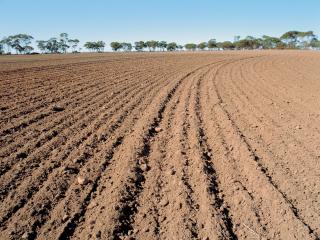Autumn tickle
Autumn tickling (also referred to as an autumn scratch or shallow cultivation) stimulates weed seed germination by placing seed in a better physical position in the soil. At a shallow depth of 1-3cm the seed has better contact with moist soil and is protected from drying out.
Autumn tickle or shallow cultivation
Autumn tickling stimulates weed seed germination by burying weed seeds to a depth of 1-3cm, which ensures the seed has better contact with moist soil and is protected from drying out. An autumn tickle also encourages weed seeds to germinate earlier by changing their position from light to dark conditions or vice versa.
Because weeds that germinate after an autumn tickle can be controlled, such a process will ultimately deplete weed seed reserves. A delay between the tickle and seeding is necessary to give an opportunity for the weeds to germinate and then be killed using a knockdown herbicide. This may cause a yield penalty for some crops.
Benefits and issues to consider include:
- An autumn tickle can be conducted using a range of equipment, including tyned implements, skim ploughing, heavy harrows, pinwheel (stubble) rakes, dump rakes and disc chains.
- A well-timed autumn tickle will promote earlier and more uniform germination of some weed species for subsequent control.
- Autumn tickle can be performed any time in autumn or winter, but post-cultivation erosion risk will be minimised when cultivation occurs closer to sowing.
- Soil type is critical for a successful autumn tickle. Light textured (sand) soils, non-wetting soils and those where moisture has trouble penetrating the profile are poor candidates for autumn tickling. Where soils wet unevenly, weed seeds may be buried in pockets of dry soil. These pockets may become wet during the season, with seeds subsequently germinating to cause in-crop problems.
- Use autumn tickling in non-crop situations to stimulate germination of weeds which can then be managed with grazing or a non-selective herbicide.
- Autumn tickling is a tactic best suited to weeds that are easily released from dormancy such as annual ryegrass.
- Soil disturbance prior to sowing can reduce soil moisture, placing the sowing operation at risk in a dry season.
- Soil disturbance prior to sowing can incorporate stubble and, as a result, significant amounts of soil nitrogen will be tied up by microbes that proliferate to degrade the stubble.
- In the early stages of no-till adoption short-term nitrogen deficiencies are likely if stubble levels are high.
More information can be found at GRDC IWM hub: Managing the weed seedbank.

